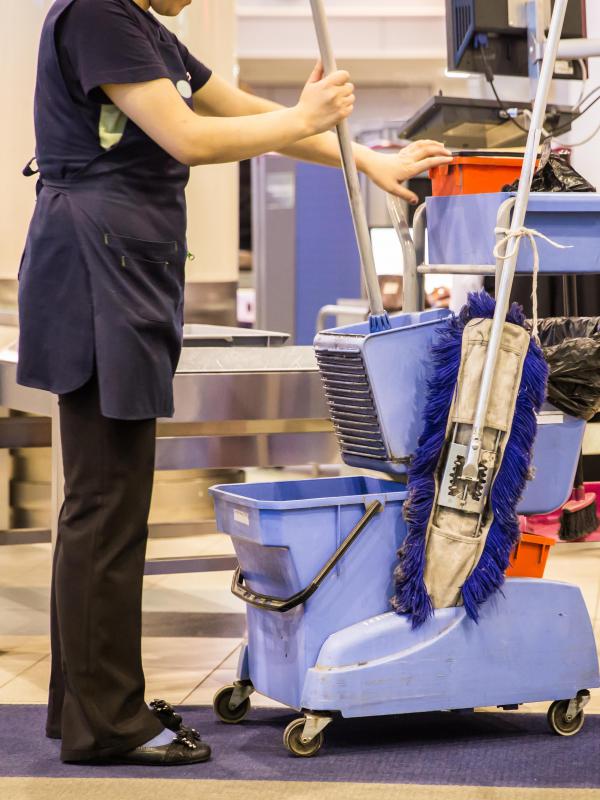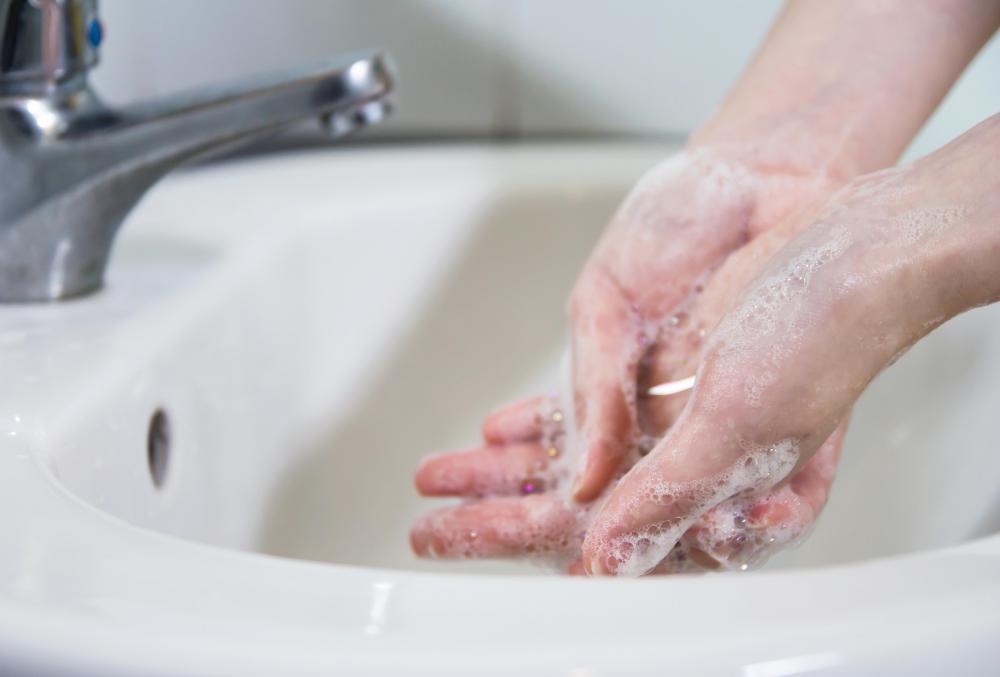At WiseGEEK, we're committed to delivering accurate, trustworthy information. Our expert-authored content is rigorously fact-checked and sourced from credible authorities. Discover how we uphold the highest standards in providing you with reliable knowledge.
What is Asepsis?
Asepsis is a state of freedom from pathogenic microorganisms like bacteria, fungi, and viruses. It is not the same thing as sterility, where no such organisms are present, not even organisms not believed to be infectious. In medical settings, care providers use a number of procedures to create and maintain asepsis for patient safety. Many nations have laws with specific mandates about maintaining aseptic clinical exam rooms, operating rooms, and so forth, and individual facilities have additional policies developed and enforced by safety officers and consultants concerned with hospital-acquired infections.
The idea of creating aseptic working conditions for medical care developed in the 1800s, when clinicians realized simple steps like washing their hands before procedures could cut down substantially on the spread of infection. Researchers examined the origins and spread of disease and used this information to develop guidelines for asepsis. Standardizing these guidelines to create safe working conditions reduced the risks of hospital-acquired infections, as well as post-procedure complications.

Some examples of techniques used for asepsis include washing hands, wiping down surfaces in clinical exam rooms, requiring patients to wear hospital gowns, and applying soaps and antibacterial products to the skin of patients before procedures like surgeries. Medical supply companies produce a number of products for aseptic procedure, including cleaning supplies, patient washes, and shields to limit fluid splashback during procedures. Care providers use multiple tactics to combat pathogenic organisms to create layers of security.

When people are in training to become medical providers, their instructors provide them with information about asepsis and sterilization. During clinical rotations where people have an opportunity to care for patients, they also learn about aspetic procedures and have an opportunity to practice while under the guidance of experienced care providers. During training, people may also learn about checklists and other tools used to enforce compliance with aseptic procedures in facilities like hospitals and clinics.

It is important to understand the differences between asepsis and sterilization. In an aseptic environment, no organisms known to cause infection are present. Patient procedures can be safely performed and organisms will not be spread from patient to patient. In sterile environments, no organisms are present. In some settings, sterility is required. For example, when a lab is doing a culture of a specimen sample, sterile conditions are needed to prevent contamination of the sample. If contamination occurs, the culture results may be incorrect. Contamination with benign organisms can also be a problem in medical research and development.
AS FEATURED ON:
AS FEATURED ON:















Discussion Comments
I have noticed the obsession with making hospital visitors de-germ their hands. I don’t have a problem with it, especially if it helps them stay aseptic.
My local hospital has antibacterial gel dispensers in front of the elevator doors, inside of the elevators, outside of the patients’ rooms, and just inside the doors of the rooms.
They even have signs on the outside of the room doors telling guests to wash their hands in the bathroom sink before approaching a patient. Of course, the dispensers contain antibacterial soap. I guess they feel that all of that antibacterial gel you gathered between the front door and the room wasn’t sufficient. Really, I know there is no substitute for a good hand washing.
My aunt works as a nurse at a hospital, and they have strict procedures for achieving and maintaining asepsis. This particular hospital has the reputation of being the finest in the state, so it strives to live up to that.
She told me that the nurses and doctors have to sing a certain silly little song while they wash their hands. The song lasts for as many seconds as it takes to remove all germs and microorganisms from your hands with warm water and soap.
They felt silly doing it at first, but because everyone has to do it, they don’t feel out of place. It truly helps keep the area free from infection.
One hospital near my home has had significant problems reaching asepsis. Several people that I know personally have become infected with something while staying there that they did not have before they came in to the emergency room.
My pregnant friend developed staph infection after having her baby at this hospital. No one there knew what instrument or area delivered the infection to her body, but it was obvious that she got it there.
Another friend of mine got staph infection from the same place after her surgery to remove kidney stones. The infection started in her pelvis, near the area where they inserted the instrument they used to break up and retrieve the stones.
I will avoid this hospital as long as it’s up to me. There is another one just ten minutes farther away, and if I can make it there, I will.
Post your comments